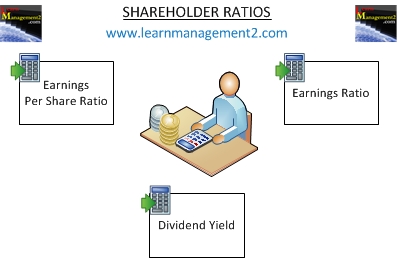Shareholder Ratios Overview
People that own a business are called shareholders because often they do not own all of the business, instead they own a part or share of the business. Businesses often raise money by selling part of the business, this part will be divided into small bits known as shares. Each share will be sold for a specific price based on how much the business as a whole is worth. Anybody that buys shares in a business is known as a shareholder.
People that have bought shares in a firm (shareholders) will be interested in how much money (return) the firm can generate for them. Shareholders receive a return from shares in two ways:
- When the shares go up in value, so that if the shareholder decides to sell their shares, they will get back more money than they paid for the shares.
- The second return is if the firm decide to give the shareholders some of the profit money it has made; this type of return is known as a dividend.
There are three ratios which analyse the return shareholders are receiving. Click on the links below to learn about each one.

Shareholder Ratios
- The earnings per share ratio calculates the amount of money each ordinary share is making Earnings Per Share. People that have ordinary shares are entitled to vote at the firm's meetings, they will also be paid money (dividends) from the company's profits after the company has paid people with preference share.